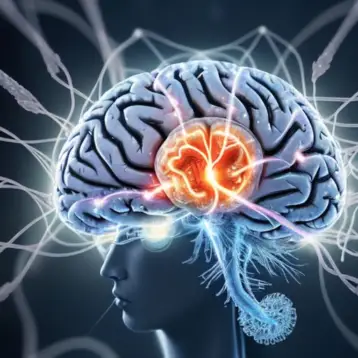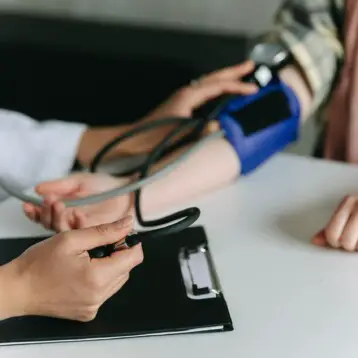|
Ion channels are pore-forming proteins that regulate the flow of ions (electrically charged salt particles) across membranes of all living cells. Ion channels are prominent components of the nervous system, in which “voltage-gated” channels underlie the nerve impulse. When a nerve cell is ready to fire bursts of electrical activity, a voltage sensor within its channel triggers channel opening and a nerve impulse is transmitted.
Two papers that deal with ion channels were recently published in the 2007 November 15th issue of Nature. One of the research projects covered in the magazine focuses on a part of the voltage sensor called the paddle, while the other one looks into the three-dimensional structure of ion channels on an atomic scale.
The first study, led by Kenton Swartz, Ph.D., a Senior Investigator at the National Institute of Neurological Disorders and Stroke (NINDS), showed that the paddle (named so for its shape) works as a modular unit and can be transplanted into different channels. Using recombinant DNA technology, the researchers swapped the paddle from an ion channel found in a bacterium to a channel found in rats’ brains. This hybrid channel remained functional as long as the paddle was intact. This feature of the paddle may eventually be exploited to test potential drugs, as researchers who want to learn about a paddle from a poorly characterized ion channel could place it in a well-studied channel where the effects of drugs are easier to measure.
Dr. Swartz’s group also found that the paddle is the docking site for certain toxins in the tarantula venom, which are known to interfere with ion channel opening. There are hints that scorpions, sea anemones and cone snails produce similar toxins, Dr. Swartz said. These findings suggest that the paddle itself will be a useful target for new therapeutic drugs.
The second study was headed by Roderick MacKinnon, M.D., a Nobel Laureate who in addition to working as an investigator at the Howard Hughes Medical Institute is also a Biophysicist at the Rockefeller University in New York. In this research project, the scientists utilized the paddle’s unique transplantability to create a hybrid ion channel ideal for structural studies. Determination of the three-dimensional structures of ion channels is the basis for understanding their functional properties. The group, therefore, revealed how the voltage sensor is positioned within the membrane and determined how it triggers channel opening.
|
“The effects of many toxins and therapeutic drugs, as well as some diseases, can be wholly explained by changes in ion channel function,” says Story Landis, Ph.D., Director of NINDS. Ion channels are known to be involved in epilepsy, chronic pain, Parkinson’s disease and other neurological disorders. Therefore, improved understanding of how these channels work may enable the development of new treatment approaches.The two research projects may also benefit other medical fields, as ion channels are involved in many additional processes in the body (cardiac, skeletal and pancreatic processes, for example).
TFOT recently covered another research focusing on neurons, in which a method to decrease neuron loss rates was developed. We also reported a breakthrough in the research of the neurodegenerative disorder known as Alzheimer’s disease, as scientists from UCLA pinpointed its possible physical origin.
A press release of these researches and more information on the NIH components supporting them can be found in the NIH news web page.











